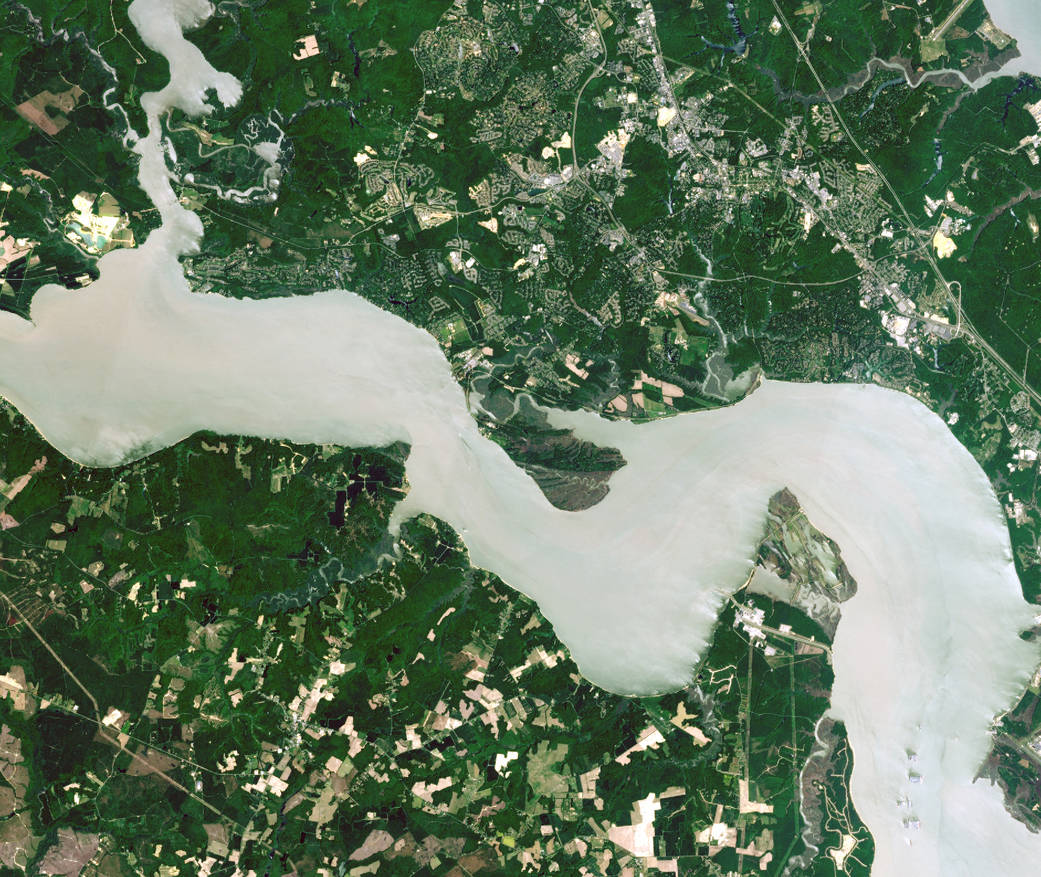
On May 14, 1607, a group of London-based entrepreneurs and accompanying laborers, collectively known as the Virginia Company, made landfall at Jamestown, VA., establishing the first permanent English settlement in what is now the United States. In May 2007, the United States celebrated Jamestown’s 400th Anniversary, commemorating the experiences of the European settlers, Native Americans, and Africans whose lives and cultures intersected in the earliest years of the American colonies.
NASA joined the celebration to honor the spirit of exploration that runs as a common thread throughout human history, honoring the anniversary with this image taken by the Advanced Land Imager on NASA’s Earth Observing-1 satellite.
In this image, the water of the James River appears pale green, perhaps from a combination of sunlight reflected off the surface and sediment in the water. On land, colors range from buff to brown to deep green, depending on the amount of vegetation. A meandering pattern of residential streets appears near the top of the image-a clear sign of how technology has changed the landscape since the original settlement. One of the most striking features of this image is a distinct line running across the southern portion of Jamestown Island, separating forest in the north from low-lying vegetation in the south.
Careful studies have pieced together the environment that greeted the Virginia Company. When the first settlers arrived, what is now Jamestown Island was a peninsula, and sea level was about 1 meter (3 feet) lower than today. Erosion carved the island away from the mainland about two centuries later. By early seventeenth century, however, salt water had already invaded the James River, making freshwater scarce.Image credit: NASA/GSFC/Lawrence Ong, EO-1 Mission Science Office


























